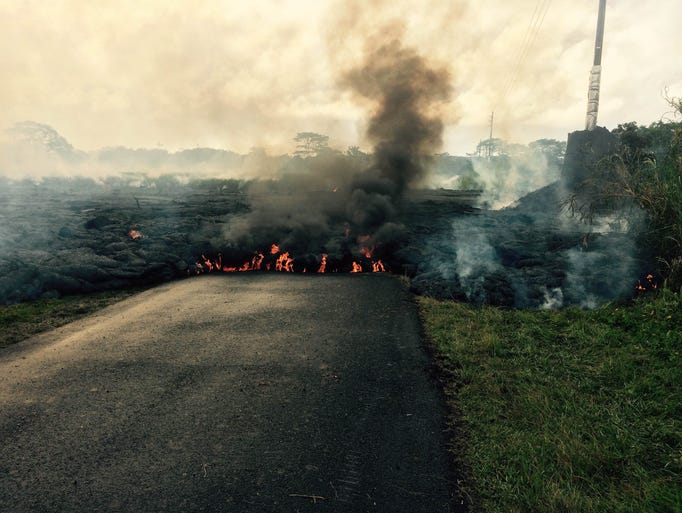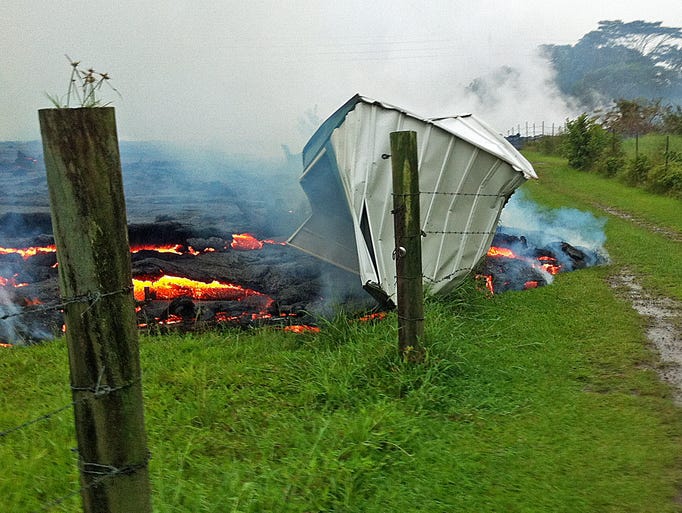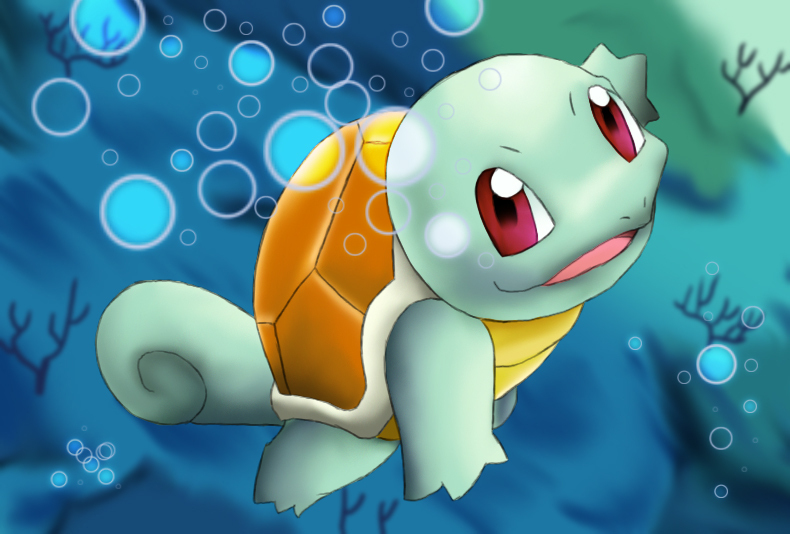Lava
Lava is inching its way to homes of people living on the big island in Hawaii. Officials say that the lava was about 100 yards away from a house on Monday morning. After a little while the lava crossed Apaa Street on Sunday in Pahoa Village, which is considered a main town of the Big Island's isolated and rural Puna district. It was getting dangerously close to Pahoa Village Road, which goes straight through downtown. The flow advanced about 275 yards from Sunday morning to Monday morning, moving northeast at about 10 to 15 yards per hour. At other times, the lava slowed to about 2 yards per hour or sped up to about 20 yards per hour. Those living downslope of the flow are under an evacuation advisory. Most residents have left or have made arrangements to go somewhere else if necessary. The couple living in the house closest to the flow have left but have been returning periodically to gather belongings, Oliveira said. "They are out of the property and awaiting the events to unfold." Scientists began warning the public about the lava on Aug. 22. At the time, residents were cleaning up from a tropical storm that made landfall over the Puna district, toppling trees and knocking out electricity. Kilauea volcano, one of the world's most active, has been erupting continuously since 1983. Initially, the lava seemed headed for the Kaohe Homesteads, a widespread,sparsely populated subdivision in the Puna district. It reached vacant lots in the subdivision before it stalled. It skirted the northeast corner of the subdivision and then headed toward Pahoa. Pahoa has a small-town, quaint and historic charm, but it's "the only town in a commercial sense in lower Puna," said state Sen. Because the lava could change direction, any community in Puna is at risk. Everyone in the district lives on the volcano. Why would someone live on an active volcano? Unlike Honolulu, the state's biggest city on the island of Oahu, the Big Island's Puna region has affordable land and offers a more rural way of life. Residents know the risks as there are special insurance requirements to buy land in certain lava zones. no one knows if the lava flow will stop, change direction or hit homes.
In the 1990s, about 200 homes were destroyed by lava flows from Kilauea.
The last evacuations from the volcano came in 2011. One home was destroyed and others were threatened before the lava changed course. Kilauea is home to Pele, the Hawaiian volcano goddess. Some residents expressed anger at suggestions to divert the flow. They say it's culturally insensitive to interfere with Pele's will. The U.S. Geological Survey says Kilauea is the youngest volcano on Hawaii Island. Officials estimate Kilauea's first eruption happened between 300,000 and 600,000 years ago. The lava isn't a reason to cancel a Big Island vacation because it's an isolated event.
Officials have warned people to stay away from the area and imposed flight restrictions because of helicopter tours hoping to see lava.




